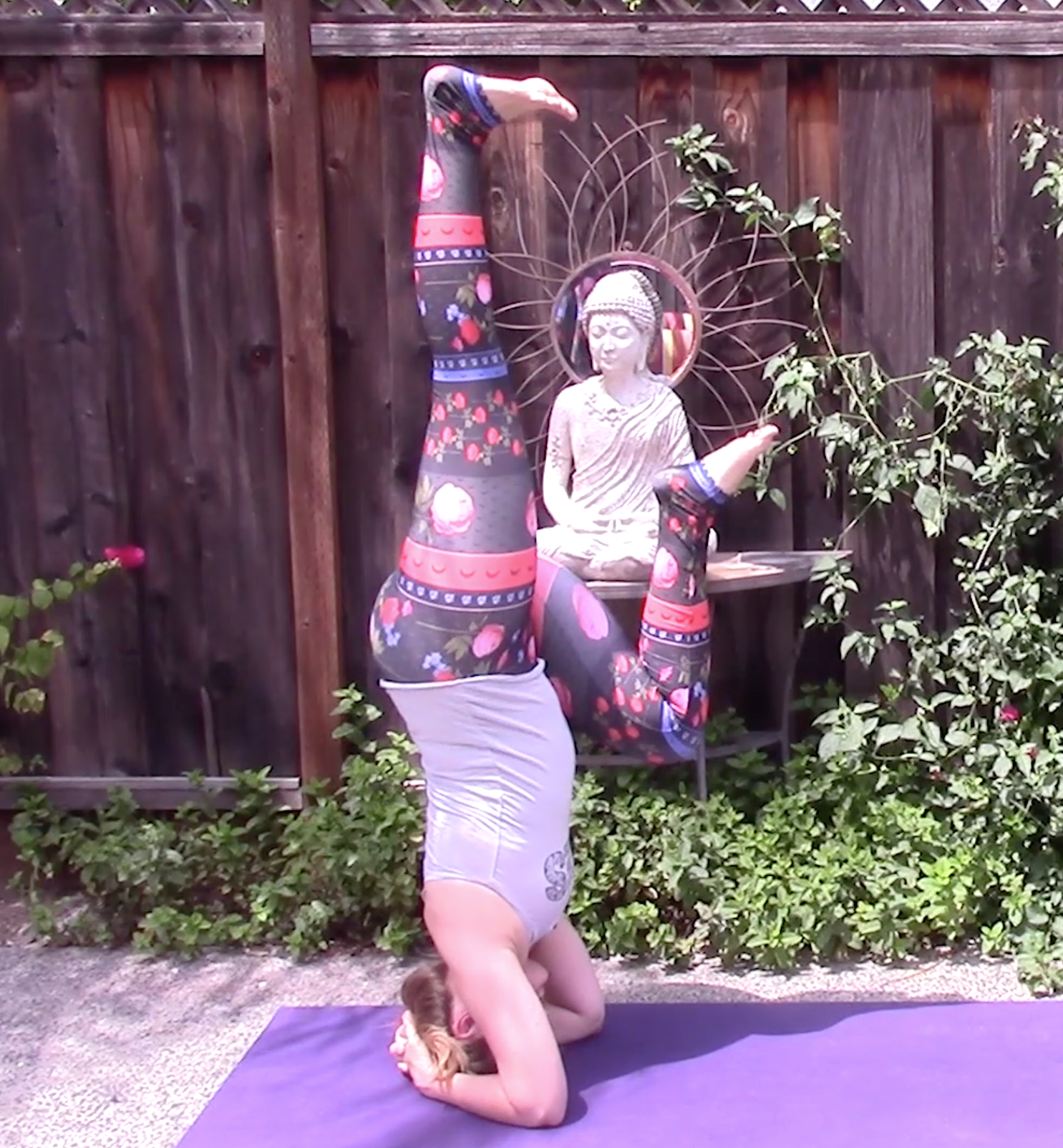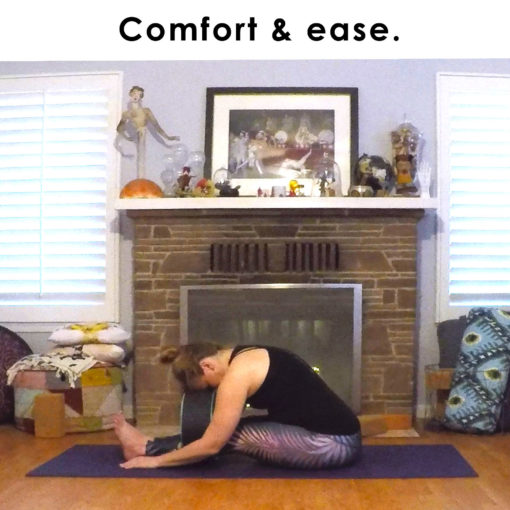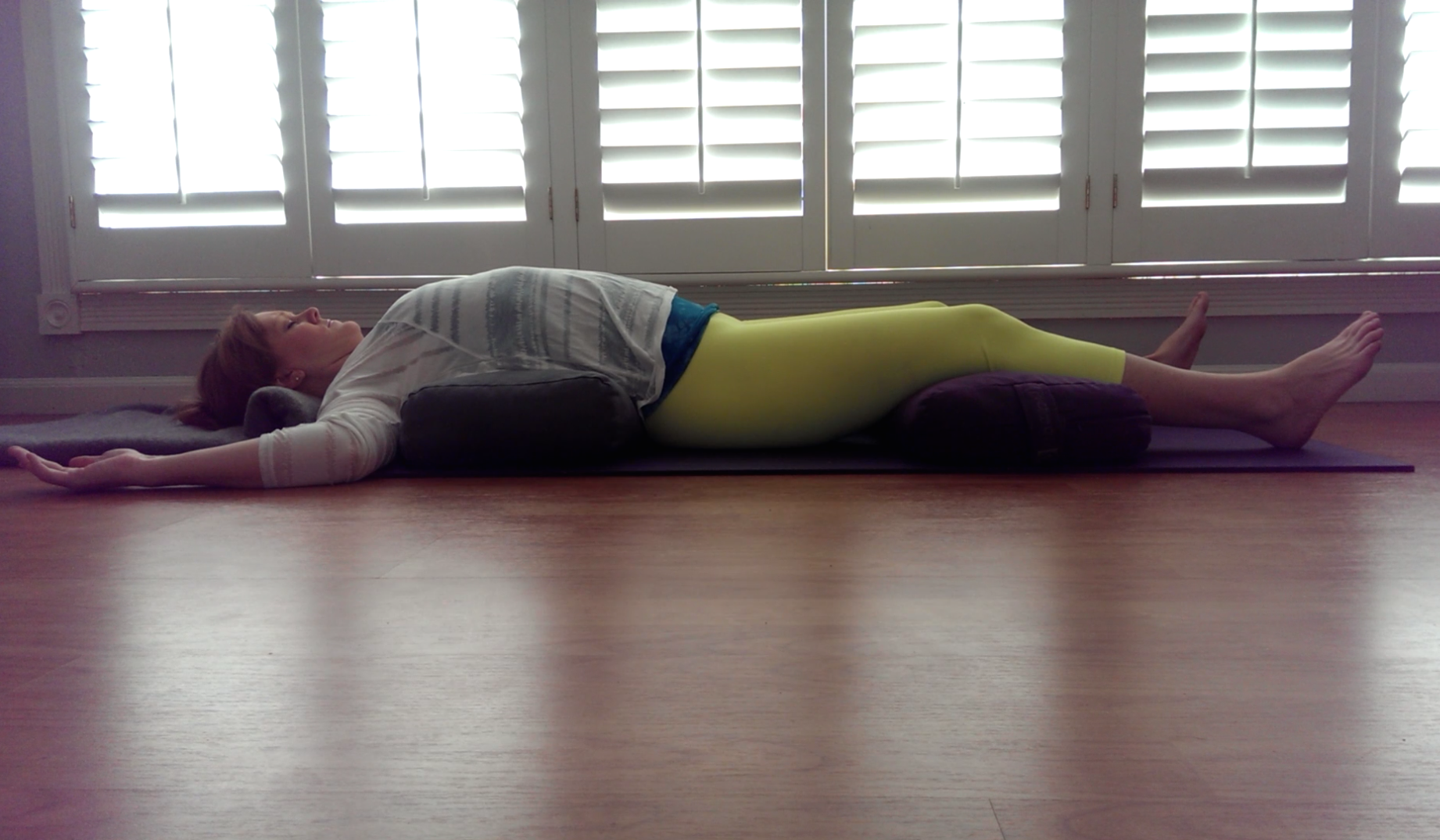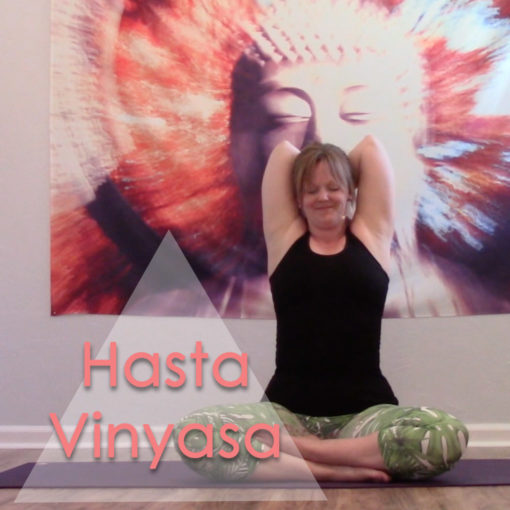Shoulderstand was my first love. It was similar to halasana, which was my white rabbit that led me down the rabbit hole of yoga practice, but it had just a bit more challenge to it. My Sivananda book told me I was to hold this pose for 6 minutes, but in the beginning, even just a few minutes had me swaying and trying to find my core. I was 18 at the time, teaching myself yoga from a book, and not too worried about my cervical spine and all of the cautions and concerns we hear today about this pose. It didn’t take me long to work up to 6 minutes, but it took quite a while for that 6 minutes to be as simple and relaxing as sitting.
Shoulderstand was also the pose that led me to the clarity during moments of quiet and calm to shift my life, making it seem possible to do something different with my career, and it even gave me the name Om Fairy. To say I have a fondness for this pose is an understatement, and thus, it’s why I’ve described a few different versions here. As long as you can tuck your chin toward your chest, one of the variations in this video should work for you.
Shoulderstand, or sarvangasana, has been described as the queen of all poses. The sanskrit name actually means “all parts pose” as it is said it rejuvenates your whole body. The full version gives a stretch to the neck and upper spine, while all versions give you the benefits of an inversion, reversing gravity’s effects on the body, as well as some degree of stimulation to the thyroid. If you’ve never tried this asana before, start with the supported version shown at the end of the video. If you want to move further, try the variation with the blankets under the shoulders to keep pressure off of the head. In the original pose with no props, ensure you feel pressure on your shoulders, even if it means not bringing the body straight to start. Over time, you can work toward the additional core and leg engagement to straighten the body if you wish.




